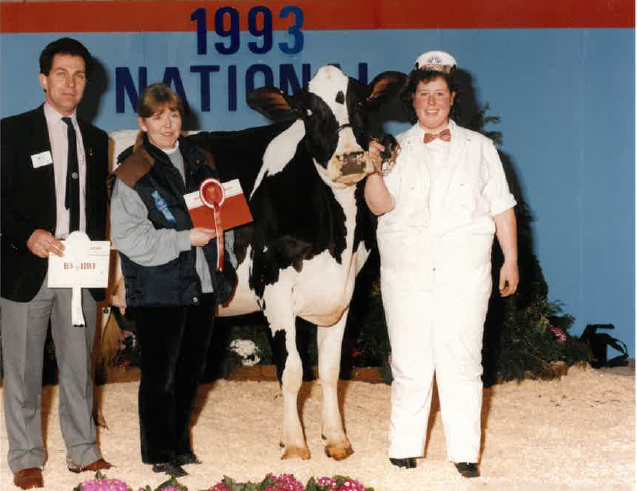Silicone, that remarkable material with its multitude of applications, has quietly revolutionised the dairy industry over the years. Let’s explore how this adaptable substance has transformed milking parlours, improved hygiene, and enhanced overall efficiency.
The image on this blog post shows the Intermed heifer in Milk, Class of 1993. Best Udder in Class Award, Sponsored by Silclear Limited. The woman to the left of the cow is one of the Silclear founders, Jackie Brenan.
- The Rise of Silicone in Dairy Farming
Silicone Tubing and Fittings
Hygiene: Silicone tubing has become the go-to choice for dairy applications due to its impeccable hygiene standards. Approved by all food contact regulators and agencies, silicone ensures safer milk production by minimising the risk of bacterial build up. Healthier dairy products reach our tables, thanks to this material.
Flexibility: Silicone tubing remains flexible across a wide temperature range. Whether it’s the heat of summer or the chill of winter, silicone won’t expand or crack. This adaptability is crucial for maintaining consistent milk flow.
Durability: Designed for daily use, silicone tubing withstands the rigours of the dairy industry. It endures constant wear and tear without compromising performance. Imagine what this resilience could mean for other industries considering a switch to silicone!
Silicone Cow Liners
Silclear Silicone Liners: These innovative liners have transformed milking practices. Here’s why:
Unique Massaging Action: Silclear cow liners utilise a patented “drawing down” motion. Instead of aggressively squeezing the teat, they gently massage it. This reduces trauma and bruising, benefiting the cows and improving milk yield.
Transparency: Silclear cow liners are transparent, allowing dairy farmers to monitor milking closely. They can spot issues promptly, ensuring the well-being of their herd.
Longevity: Silclear cow liners last up to 10,000 milkings, significantly longer than traditional rubber liners. This reduces replacement costs and labour time.
Lightweight: Silclear cow liners and shells are lightweight. Feel less fatigued at the end of the day and reduce your chances of injury.
- The Future of Silicone in Dairy
As technology advances, silicone continues to play a pivotal role. Automated milking systems, and sustainable dairy practices all benefit from silicone’s properties.
So next time you pour a glass of milk, remember the unsung hero—silicone—that quietly ensures safe, efficient, and wholesome dairy production.
